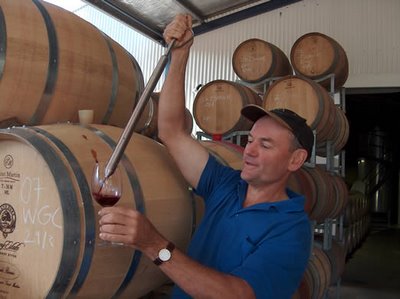Learning to taste

Pour a small measure, swirl it in the glass, and then take a sniff. Then put some in your mouth, swish it around a bit, and then either spit or swallow. All the time you need to be thinking the following sorts of thoughts:
- What does it taste and smell like?
- Do I like what it tastes and smells like?
- What sorts of components can I taste or smell?
- Does it work as a whole?
- Is it simple, or complex?
- As I think about the taste and smell of the wine, am I getting any fresh nuances, or does the experience change?
- What sorts of food might this wine go with?
It’s no good just reading this, because it will rapidly be lost in some dark corner of your memory, never to resurface. To understand what I’m getting at, you need to be reading this glass in hand. If this isn’t appropriate or possible now, then make a mental note to come back to this page on a suitable occasion when you can actually drink.
Have you got a glass in front of you? Now go back to the list of questions above. Think about what you are drinking: it may help to have a notepad to hand to jot down and make sense of your thoughts.
Tasting takes time, especially if you aren’t experienced. I find the analogy of a Turkish carpet shop helpful. For most people, the taste experience is like looking at a rolled up carpet. You can tell it’s a carpet, but not much else about what it’s really like; in a similar vein, to most people a glass of wine is wine, usually either white or red, and dry or sweet. For many others, the taste experience is like leafing through a stack of plied up carpets. Now you can see a bit of the pattern, but not too much.
But if you take the time, and think about what you are dinking in a semi-analytical way, as you gain experience it will be like taking a carpet and unrolling it across the floor: suddenly the entire pattern becomes apparent. But there’s an uncertainty – and imprecision – associated with the senses of taste and smell: so however experienced we are, it’s often as if we are studying the carpet in the dim light of a back street shop in Istanbul with a pushy salesman at our elbow. We just have to live with this imprecision.


1 Comments:
I found decent information in your article. I am impressed with how nicely you described this subject, It is a gainful article for us. Thanks for share it. persian rug carpet
Post a Comment
Subscribe to Post Comments [Atom]
<< Home